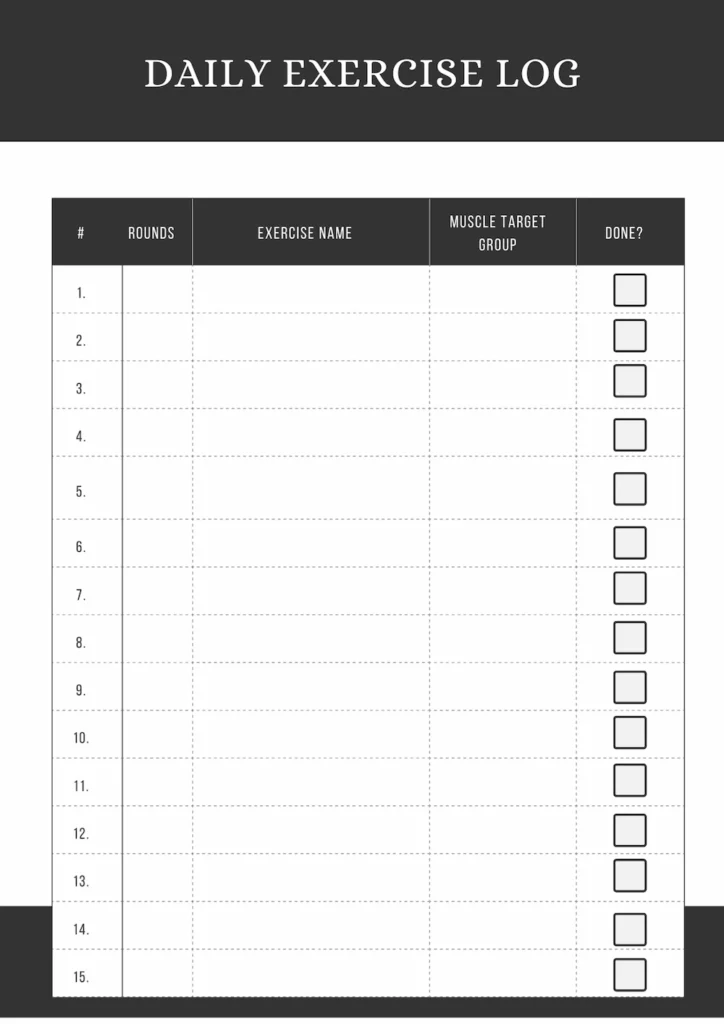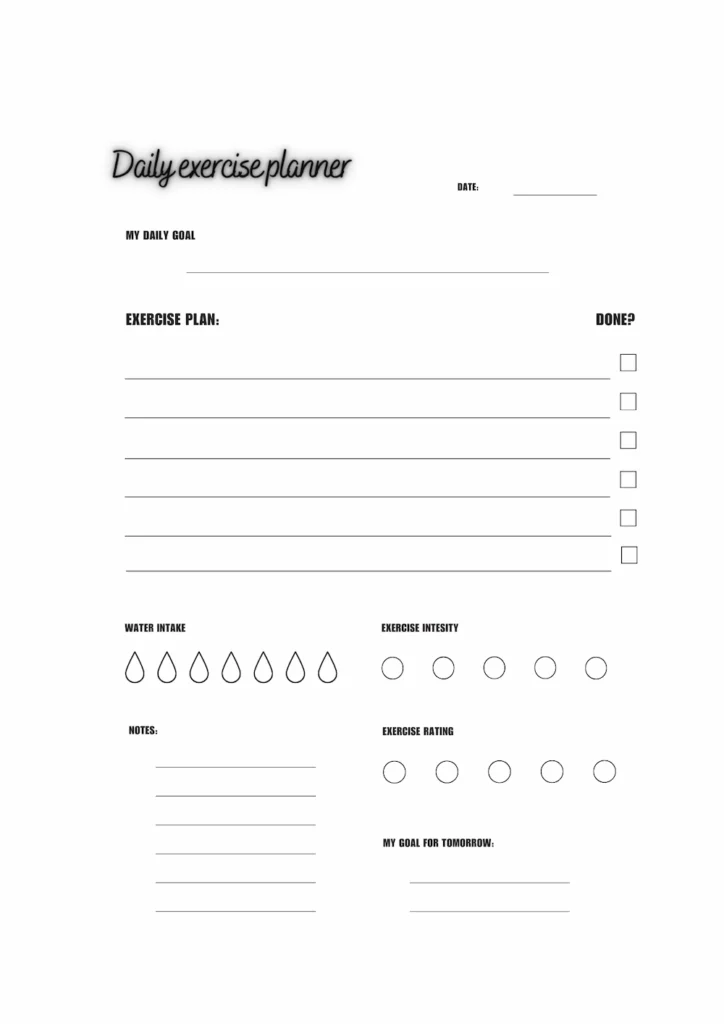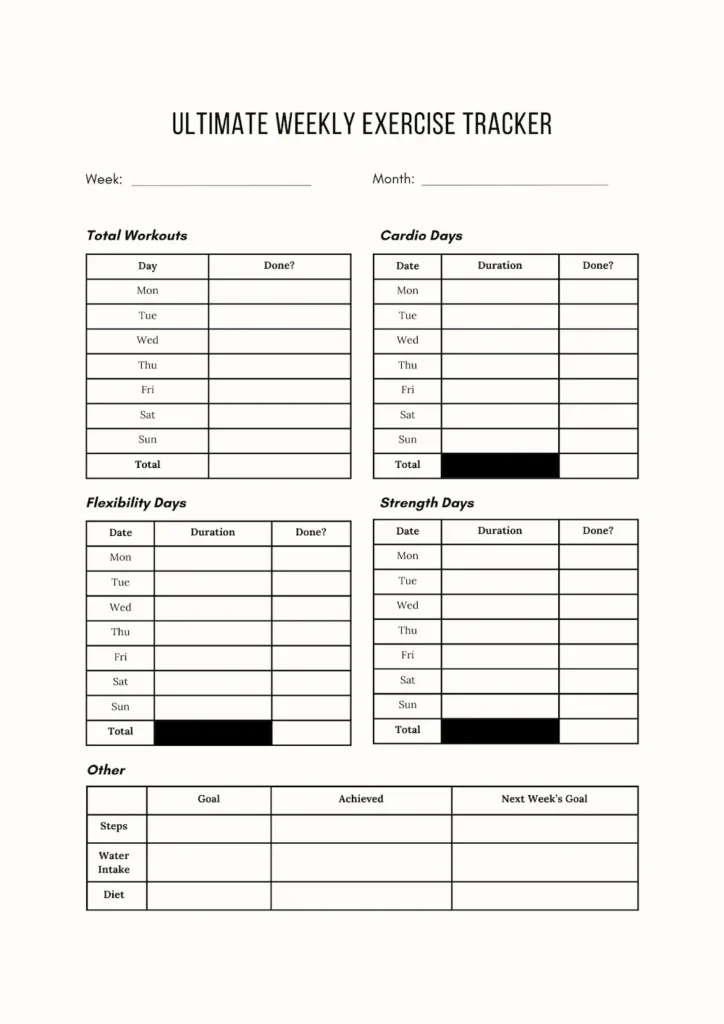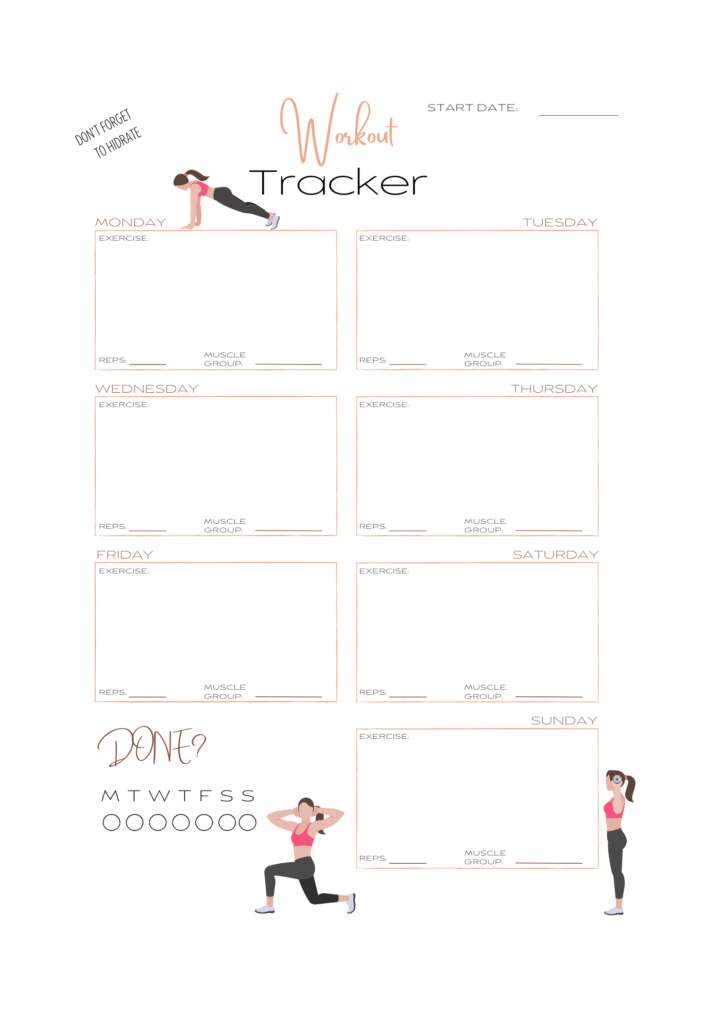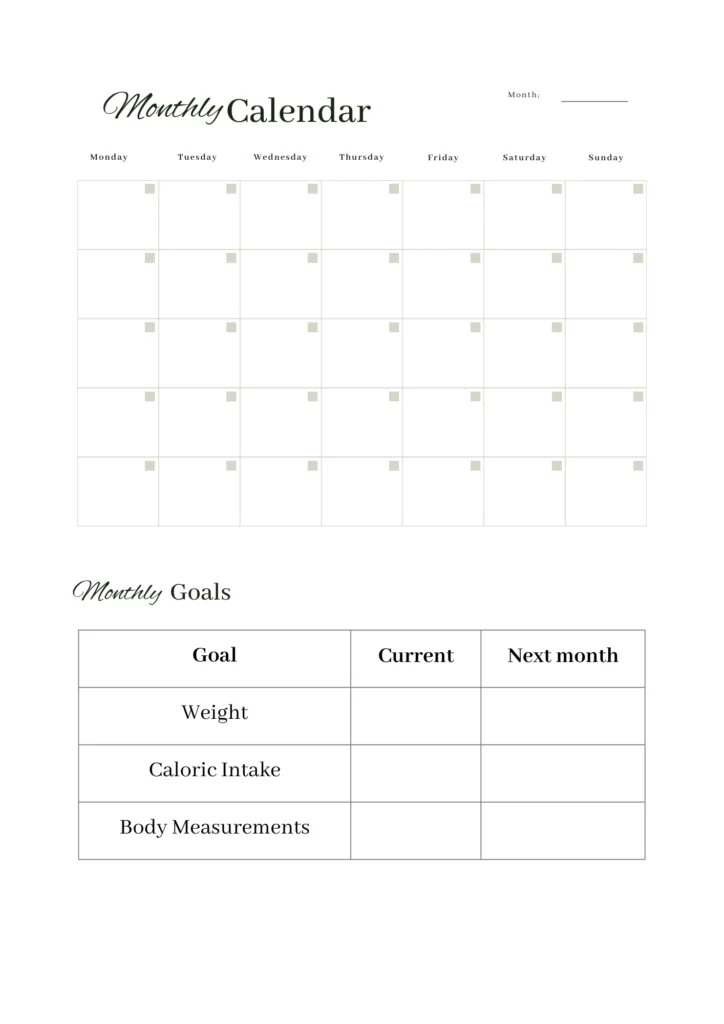Workout tracker printables transform chaotic exercise routines into structured fitness plans that deliver real results. When you track your workouts consistently, you stop guessing about your progress and start making data-driven decisions about your fitness journey. Here’s your complete guide to using these powerful tools for achieving your fitness goals.
Find and Download Your Template
Before you can start tracking, you need to select and print the right template for your fitness routine.
Choose Based on Your Current Routine
Look at how often you currently work out and pick a template that matches that frequency. If you exercise 3-4 times per week, grab a weekly tracker. If you’re just starting out or prefer monthly overview, download a monthly calendar format.
Consider Your Tracking Preferences
Think about how much detail you want to record. Daily templates give you space for specific exercises, sets, and reps. Weekly formats balance detail with overview. Monthly calendars focus on consistency rather than specific performance data.
Print Multiple Copies
Download your chosen template and print several copies at once. Having a stack ready prevents interruptions to your tracking routine when you finish one sheet. Use heavier paper if you plan to write on both sides or carry it in your gym bag.
Fill Out Your Workout Plan
Once you have your printed template, plan your workouts in advance rather than deciding what to do each day.
Schedule Your Workout Days
Mark which days of the week you plan to exercise. Be realistic about your schedule and energy levels. If you’re new to working out, start with 2-3 days per week rather than planning daily sessions you won’t maintain.
Assign Workout Types
Decide what type of exercise you’ll do each planned day. Alternate between cardio, strength training, and flexibility work throughout the week. Write these workout types directly on your template so you have a clear plan to follow.
List Specific Exercises
For each planned workout, write down the specific exercises you intend to do. Include how many sets and reps you plan for strength exercises, or duration for cardio activities. Having this written out eliminates decision-making during your workout.
Complete Your Planned Workouts
With your template filled out as a plan, use it as your guide during each exercise session.
Bring Your Tracker to Every Workout
Keep your printed template with you during exercise, whether you’re at home, gym, or outdoors. Place it somewhere visible so you can reference your planned exercises and check them off as you complete them.
Follow Your Written Plan
Stick to the exercises you planned rather than improvising. Your pre-written plan ensures balanced training and prevents you from skipping challenging exercises when you’re tired or unmotivated.
Modify When Necessary
If you can’t complete a planned exercise due to equipment availability or physical limitations, write down what you did instead. This keeps your tracking accurate and helps you plan better next time.
Record Your Results After Each Session
Immediately after finishing your workout, update your tracker with what you accomplished and how it felt.
Log What You Completed
Write down the exercises you finished, including sets, reps, weights used, or duration. Be specific about numbers—this data becomes valuable for planning future workouts and tracking progress over time.
Note How You Felt
Add brief notes about your energy level, which exercises felt challenging, or any discomfort you experienced. These qualitative notes help you understand patterns in your performance and recovery.
Mark Your Success
Check off or highlight completed workouts to create a visual record of your consistency. Seeing these marks accumulate provides motivation and shows you’re building a successful exercise habit.
Review and Plan Your Next Cycle
When you finish one tracking sheet, use the information to improve your next cycle of workouts.
Analyze Your Patterns
Look at which workouts you completed consistently and which ones you skipped. Identify days of the week when you had the most energy and when you struggled to exercise.
Adjust Your Next Plan
Use insights from your completed tracker to modify your next workout plan. If you consistently skipped Friday workouts, try moving that session to a different day. If certain exercises felt too easy, increase the difficulty.
Print and Start Fresh
Download and print your next tracking sheet, incorporating lessons learned from the previous cycle. Each new tracker should be slightly more tailored to your actual habits and preferences.
My Collection of Free Workout Tracker Printables
Over time, I’ve created a variety of fitness tracker printables to suit different needs. Here’s what I’ve got for you:
Common Tracking Problems
Even with the best intentions, you’ll face challenges that can derail your tracking routine.
When You Miss Tracking Days
Don’t try to recreate missed workouts from memory. Simply resume tracking from your next workout and focus on consistency going forward. Missing a few days doesn’t invalidate your entire tracking system.
When Your Plan Doesn’t Work
If you consistently can’t complete your planned workouts, your plan is too ambitious. Scale back to a routine you can maintain consistently rather than pushing through an unrealistic schedule.
When You Lose Motivation
Review your completed tracking sheets to see how much progress you’ve made. Often, seeing your consistency and improvements in black and white rekindles motivation when it starts to fade.
FAQ
Let me answer some of the questions about these workout trackers:
Absolutely! They’re designed to be flexible for any workout routine.
I like to update mine weekly, but you can do it daily if that works better for you.
Record what you did complete rather than leaving it blank. Partial workouts still count as progress and help maintain your tracking habit.
